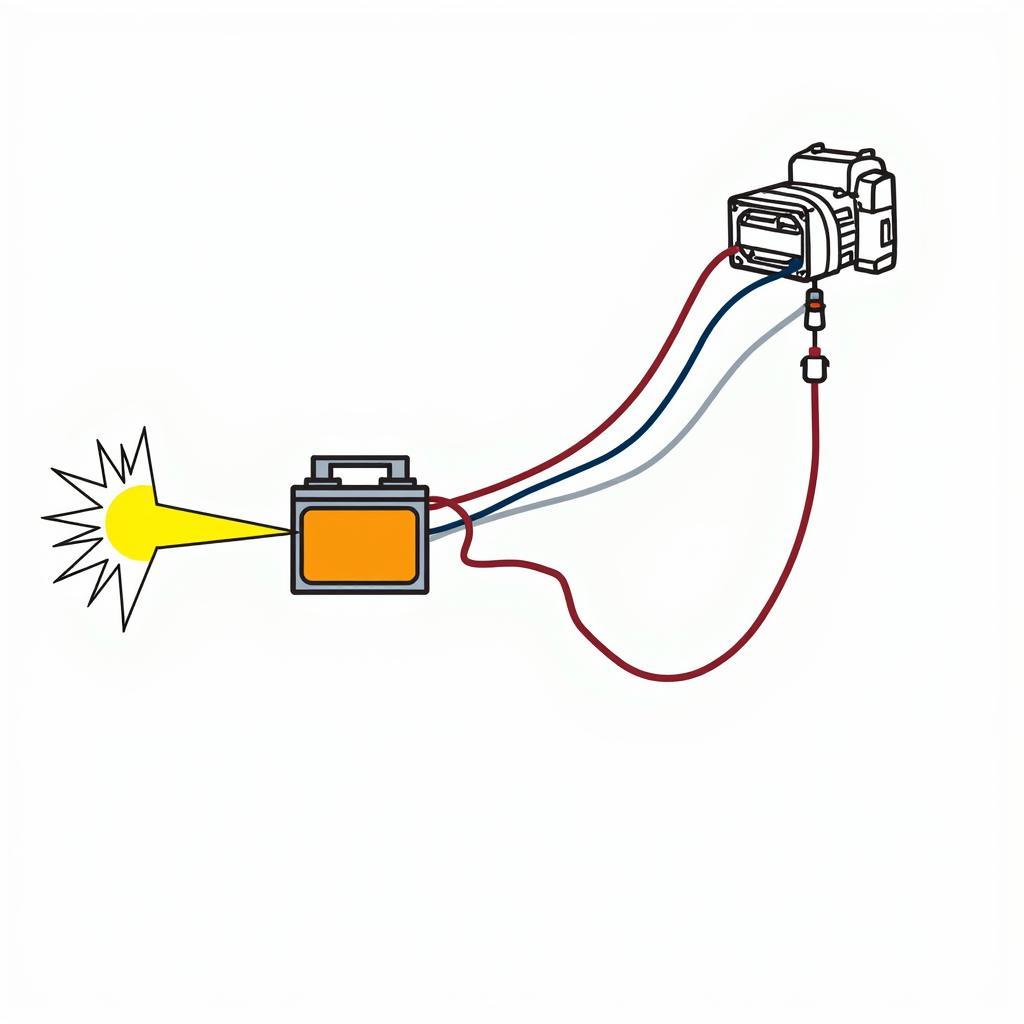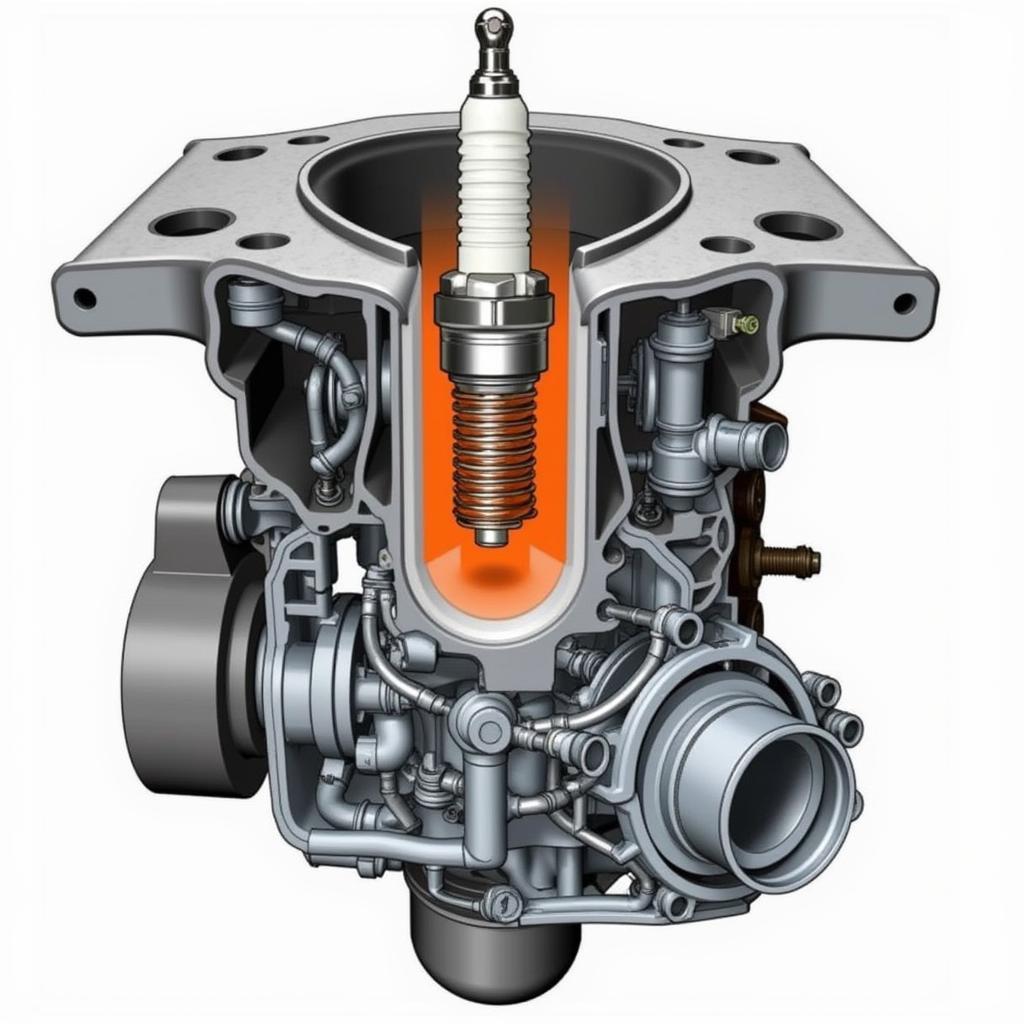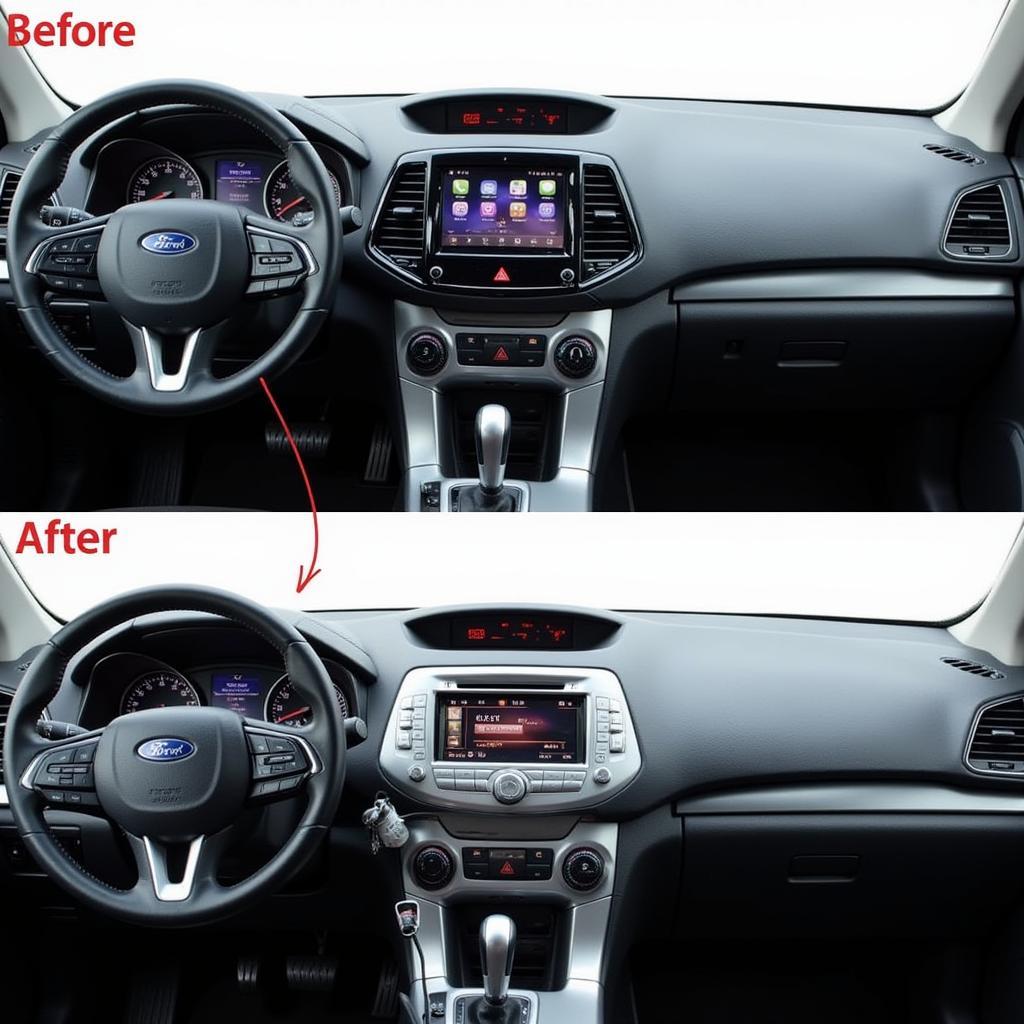Is your car struggling to start, or are your headlights dimming? You might be facing a battery vs alternator issue. Identifying the culprit quickly can save you time, money, and potential roadside headaches. This comprehensive guide will walk you through the process of diagnosing whether a failing battery or a faulty alternator is the source of your car troubles.
 Car Battery and Alternator Diagram
Car Battery and Alternator Diagram
One of the most common reasons people seek [bluetooth radio for old car] options is due to electrical issues with their existing system. While upgrading to Bluetooth is a great option, you should first resolve any underlying power problems. Sometimes, a simple battery replacement or alternator repair can restore your original radio to perfect working order.
Understanding the Roles of Battery and Alternator
The battery and alternator are integral parts of your car’s electrical system, working in tandem to power everything from the ignition to the headlights. The battery stores electrical energy, providing the initial power to start the engine. The alternator, on the other hand, generates electricity while the engine is running, recharging the battery and powering the car’s electrical systems.
Recognizing the Symptoms of a Bad Battery
A failing battery often manifests through:
- Slow cranking: The engine struggles to turn over.
- Dim headlights, especially when idling.
- Clicking sound when turning the key: This indicates insufficient power to engage the starter.
- Interior lights flickering or failing.
- Malfunctioning dashboard warning lights, especially the battery light.
Identifying a Faulty Alternator
A malfunctioning alternator can present with the following symptoms:
- Dim or flickering headlights that brighten with increasing engine speed.
- Whining or growling noise from the engine bay.
- Frequent stalling.
- Battery warning light illuminated on the dashboard.
- Electrical accessories malfunctioning or working intermittently.
- Dead battery after a short drive: This suggests the alternator isn’t recharging the battery.
“A common misconception is that a jump start will solve all starting problems,” says automotive electrical expert, David Miller. “While it can get you going temporarily with a dead battery, if the alternator is faulty, the battery will drain again quickly.”
How to Diagnose Battery vs Alternator Issues
There are several tests you can perform to pinpoint the problem:
- Visual Inspection: Check the battery for cracks, leaks, or corrosion. Also, inspect the alternator belt for wear and tear.
- Battery Voltage Test: Use a multimeter to measure the battery voltage. A healthy battery should read around 12.6 volts.
- Alternator Output Test: With the engine running, measure the voltage across the battery terminals. It should read between 13.5 and 14.5 volts. A lower reading indicates a potential alternator problem.
- The Jump Start Test: If the car starts after a jump start but dies again shortly, it often points to a bad alternator.
Another option is to [turn old car radio into bluetooth], which might require some rewiring. However, if you are already troubleshooting electrical issues, it might be a good time to consider this upgrade. You can even learn [how to add bluetooth to 1978 car radio] if you have a classic car.
Resolving the Issue
Once you’ve identified the problem, you can take the appropriate steps. A dead battery typically requires replacement. A faulty alternator might need repair or replacement. In either case, if you are not comfortable working on car electrical systems, it’s best to consult a qualified mechanic.
“Regular maintenance can prevent many electrical problems,” advises Miller. “Get your battery and alternator tested periodically, especially if you notice any unusual symptoms. This proactive approach can save you from unexpected breakdowns and expensive repairs.” If you’re looking for ways to enhance your car’s audio while addressing these electrical issues, consider exploring articles like [how to make old car radio bluetooth] or learn [can sirius radio be used with bluetooth in car].
Conclusion
Understanding the difference between battery vs alternator issue is crucial for maintaining your car’s health. By recognizing the symptoms and performing simple tests, you can quickly diagnose the problem and take appropriate action, saving you time and money in the long run. Don’t let a failing battery or a faulty alternator leave you stranded.
FAQ
-
How long does a car battery typically last? On average, car batteries last 3-5 years.
-
Can I drive with a bad alternator? You can drive for a short distance, but the battery will eventually drain, leaving you stranded.
-
How much does it cost to replace a car battery? The cost ranges from $100 to $300 depending on the type and brand of battery.
-
How much does it cost to replace an alternator? The cost can vary between $300 and $800, depending on the make and model of your car.
-
What causes an alternator to fail? Common causes include worn-out brushes, damaged diodes, or a failing voltage regulator.
-
Can a bad battery damage the alternator? A bad battery can put extra strain on the alternator, potentially shortening its lifespan.
-
How can I prevent battery and alternator problems? Regular maintenance, including battery and alternator testing, is crucial for preventing issues.



